Secondary On-line Learning
Project SOL developed a comprehensive, online, college preparatory set of courses in math and science, and provided access to a rigorous curriculum for Spanish-dominant, immigrant high school students.
We began Project SOL 1.0 with materials created in Mexico that were aligned with most Latin American standards. We later saw a need to improve pass rates and realized that changes to the curricula and instruction could potentially achieve that goal. These updates were completed during Project SOL 2.0.
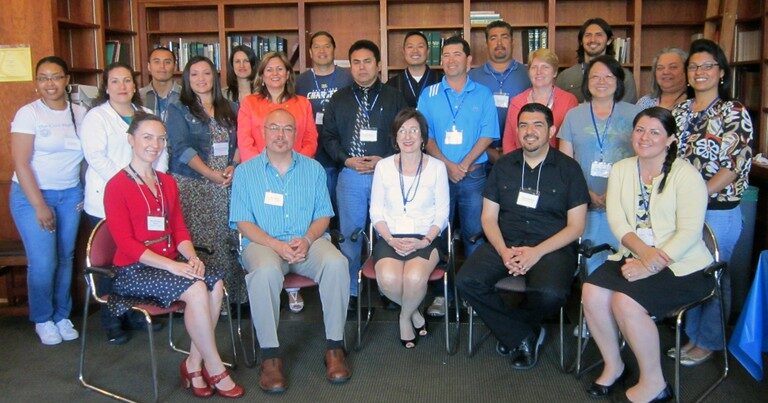
Advisory Board:
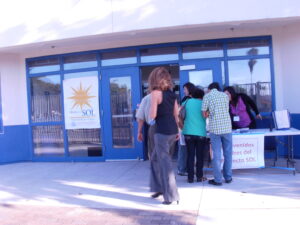
- Vanessa Calva-Ruiz
Consul for Community Affairs - Anthony P. Carnevale
Research Professor and Director
The Georgetown University Center on Education & the Workforce - Maggie Carrillo Mejia, Ph.D.
Retired Superintendent - Kathleen Chavira
Principal Consultant
Senate Education Committee, State Capitol - Juan Marcos Gutierrez Gonzalez
Consul General of Mexico in Los Angeles - Jorge Ruiz-de-Velasco, Ph.D., JD, UC Berkeley, School of Law, *Advisory Board President
- Philip Uri Treisman
Professor of Mathematics and Public Affairs
Executive Director, Charles A. Dana Center
The University of Texas at Austin
Note: affiliations at time of service are listed and not necessarily current
Staff:
- Project Coordinator: Mary Martinez-Wenzl
- Research Associate: Megan Hopkins
- Research & Professional Development: Marco Diaz, Ursula Aldana, Danny C. Martinez
- Principal Investigator: Patricia Gándara, Professor, UCLA Graduate School of Education, Co-Director, The Civil Rights Project, UCLA
- Program Administrator: Laurie Russman
- Questions? Contact the Civil Rights Project.
Partners:
- The University of California has developed the standards alignments and other supplemental materials, which are now available to us.
- The Mexican government is providing the Mexican on-line curriculum, supporting the participation of an expert in US-Mexico course accreditation, and providing on-line tutors for students. The Mexican government has also agreed to support the initial training of our project teachers.
- The four initial Participating Schools and their School Districts (and any subsequently selected schools) provides a select group of teachers at each site, agrees toimplement and use the Mexican online curriculum, and allows our researchers to observe their classroom instruction of the curriculum. Each school also designates a counselor that follows our Project SOL cohort of students to ensure they make progress towards graduation and college.
- The Promise Initiative is a consortium of six County Offices of Education dedicated to strengthening the education of English Learners in those counties, which include San Bernardino, Los Angeles, Riverside, San Diego, Orange, and Ventura. The Promise Initiative will collaborate with this project in course articulation.
- The generous support of the Gates & Irvine Foundations & The Carnegie Corporation made this project possible.
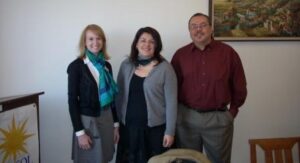
Graduate student researchers play key roles throughout the study.
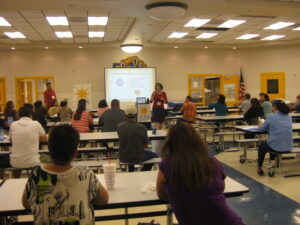
Project SOL 1.0 (SOL is an acronym for Secondary On-line Learning) was a demonstration project focused on specific school-based interventions. It was a teacher-supported, online curriculum designed to accelerate the content learning of Spanish-dominant secondary school students.
Typical of demonstration initiatives, Project SOL proceeded along two simultaneous tracks: program implementation and documentation (study). Each is summarized below.
Project leaders and classroom teachers approached the core educational challenge through the following intervention strategies:
- Provide supplemental instruction via Mexican-developed and California standards-aligned online curricula in Spanish.
- Cover several core curriculum areas both in class and after school.
- Articulate school-based interventions with online supplemental teachers based in Mexico.
- Assist teachers based at Southern California school sites in learning how to integrate the supplemental curriculum, including its online components, into their direct instruction.
- Enhance English Language Development (ELD) instruction for students and professional development for ELD teachers.
SOL 1.0 provided a course translation protocol, developed by the University of California and the Mexican Department of Education, so that students received California (or U.S.) credit for courses they already completed in Mexico.
A counselor was selected from each participating school to collaborate with the SOL team. The counselors identified and assigned students to Project SOL courses and monitored student progress. The counselor also assisted in data collection.
Project SOL incorporated a bilingual researcher who tracked the students and collected data to monitor student success.
A bilingual external evaluator served in the role of “critical friend” to review all evaluation materials and consult with the project on matters of evaluation. The external evaluator provided an annual report to the team on the status of the project .
Project SOL’s vision included working with local organizations, like the Parent Institute for Quality Education, and local Mexican consular offices to disseminate information in the community regarding both the benefits of this program and of returning to and/or staying in high school (and beyond).
- Increase secondary English Learner’s (EL) English language and content achievement and
- Build a curriculum and professional development (PD) module.
The PD module was designed to increase the capacity of secondary teachers in California and other states to help Spanish-dominant students stay in school, graduate, and prepare for college.
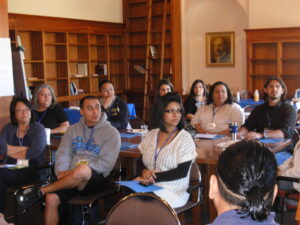
The Project’s success was measured by gains in:
- Students’ college preparatory and graduation course credit accumulation;
- Rates at which students achieved critical benchmarks (e.g., successful completion of grade level and college requirements, passage of the state high school exit exam);
- High school graduation;
- Positive attitudes toward school and post-secondary education;
- Capacity of teachers and counselors to meet the needs of secondary EL students, and
- Knowledge and understanding by parents of academic resources available to their children.
The documentation and research aspects of the study aimed to preserve and disseminate field-tested strategies and best practices in instruction to education stakeholders.
The culminating report, “Preparing Secondary English Learners for Graduation and College,” provides a deep review of the project’s methods, outcomes and findings, with suggestions for future work.
We provide a synopsis of outcomes below:
- Project SOL 1.0 developed and refined a comprehensive online college preparatory math and science set of courses, which provided access to rigorous curriculum for Spanish-speaking immigrant students.
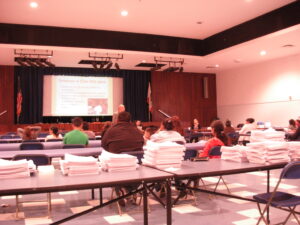
An afterschool SOL Club fostered a sense of belonging and attachment to school. - The program provided a gateway for almost 500 Spanish-speaking immigrant students to key college preparatory math and science courses, in four high schools in Southern California.
- This resulted in almost 1000 college preparatory course enrollments and increased thepass rates of the students taking these courses.
- These courses would not normally have been available to students who were still learning English. Although not a randomized study, we were able to demonstrate higher college preparatory course-taking and pass rates among Project SOL students than for similar students in other similar schools, including in courses such as chemistry and physics, which are virtually “off limits” to most English learners.
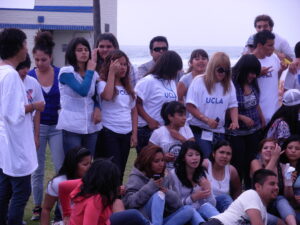
Notwithstanding these successes, we saw a need to improve the materials and learning experience, as evidenced by still inadequate passage rates for students. Less than half of students taking Algebra I, Geometry and Biology for Project SOL passed the course with a C or higher, which was better than comparison students, but still not good enough.
Our goal was (and is) not only to improve access to college-prep courses for English learners, but also to strengthen their college readiness. As such, Project SOL 1.0 helped us understand how we could improve on the curricula and instruction in Project SOL 2.0 and simultaneously meet the challenge of new Common Core standards.
“Bilingual Program in Math, Science Preps English Learners for College.” UCLA Today, November 21, 2012.
“Bilingual Program Opening Doors for Kids.” MSNBC’s Alex Witt profiles a dual-language elementary school program making a difference in the lives of children. NBC News, September 22, 2012.
“Estudian en California con el programa escolar mexicano.” BBC Mundo, April 25th, 2012.
“Project SOL helps migrants shine in school.” San Diego Red, March 7th, 2012.
“Mexican Government Provides College-Bound Curriculum for American Students.” Center for Applied Second Language Studies, February 12th, 2012.
“Bilingual classes try to push Latinos toward college.” Los Angeles Times, February 4th, 2012.
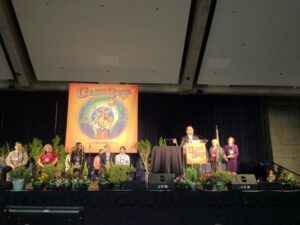
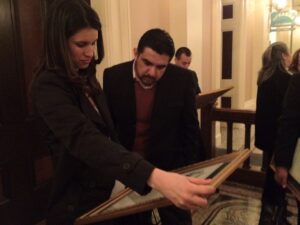

This brochure describes the Project SOL 2.0 program: a Common Core-aligned, open access, secondary math curriculum.
We initiated Project SOL 2.0 in 2013, with the intent to provide the curriculum in open access format, aligned to Common Core State Standards (and consistent with Mexican college preparatory curricula, which is aligned with most other Latin American school systems) and in both English and Spanish.
We selected CK-12 as a resource and guide for the curriculum. During the development of our prototype, we sought advice from experts in the field of mathematics and open access and were led to CK-12 for its vision and commitment to open access resources.
Three elements unique to CK-12 motivated our use of their online resources as a platform on which to build the SOL 2.0 course modules: open access, Spanish resources and their Common Core alignments.
First, CK12 offers open source content in math and science to educators. To this end, CK-12 uses a creative common non-commercial share alike and attribution license, which means that any user can take and share the content in any way they like so long as it stays in the same or similar license. Attribution is given to CK-12, and there is no charge for the content.
CK-12 also includes a translation tool on their website that allows their material to be translated into Spanish with the click of one button.
Additionally, the CK-12 math courses (Algebra 1, Algebra 2 and Geometry) have been aligned to the Common Core mathematical standards for Algebra and Geometry, and have been further aligned in our version. However, there is currently no similar prototype for Next Generation Science Standards, which we intend to build “from the ground up” based on what we have learned from our work on math alignments.
Frequently Asked Questions about Project SOL 2.0
Reference Guide
We created a manual that any teacher can use to help implement the Common Core-aligned curriculum in the classroom, with students at all levels of English and Spanish. The Reference Guide: Accessing Project SOL Materials is a quick introduction for teachers explaining how to access the Project Sol 2.0 Mathematics modules.
Different Approaches to Using the Online Materials
Given the range of technical expertise and skills teachers already have, the online course platforms can be utilized in a myriad of ways. Our experience with Project SOL revealed a few ways teachers might benefit from using the courses.
We outline these approaches below.
- Ideally, students would be able to access the online courses on their own personal computer/device at school or even at home. Under these circumstances, students are able to actively engage in the curriculum at their own pace, and explore the online courses at their own speed and/or direction from their teacher. Teachers will have to ensure they adequately prepare students to sign on and enter the courses, and then check in with students as they continue to work on the website.
- If there is a shortage of computers at the school, teachers can also utilize the online course resources by selecting specific resources and/or assignments for students to work on in small groups. In this case, students can work in pairs or triads to view resources or work on specific assignments.
- In classrooms where a 1, 2 or 3 to 1 ratio of computers to students is not possible, teachers can use the online courses in their classrooms by projecting them onto a screen. In this case, we suggest that teachers select activities and online videos that students would benefit from viewing and listening on large screen/speakers.
Language Learners
These are resources for teachers implementing a bilingual (English/Spanish) mathematics program for students who are developing English-speaking skills while maintaining their first language. They may also be used by students in Spanish-speaking contexts whose English is actually stronger than their Spanish, such as in the case of students partially educated in the U.S. attempting to complete their secondary education in a Spanish-speaking country.
Bilingual Settings
Finally, the materials may be used in fully bilingual settings such as in International Baccalaureate programs where the focus is on learning in two languages. The modules are aligned to the Common Core State Standards (CCSS), both in the content and mathematical practice standards. The materials used for the modules come from publicly accessible curriculum projects and teacher created resources emphasizing the CCSS.
Much of our work has focused on improving the CK-12 math curricula to incorporate more interactive and learner-driven online materials to meet students’ needs, wherever they are in relation to content-specific competencies and skills, and to provide teacher guidance for teaching to common core standards.
Our Process
- Our process included an initial collection of resources by our math teacher consultants in the US and Mexico.
- Then our math teachers reviewed the resources to ensure they were Common-Core aligned and corresponded to Mexican standards.
- The final step included a review by our common core math expert.
- Subsequent phases of this work will follow the same process.
This project has benefited from the participation of exceptionally talented and experienced teachers and curriculum experts in both the U.S. and Mexico. Our teams include several bilingual, secondary math teachers with decades of classroom experience, the State of California’s Director of Common Core Mathematics Curriculum Development, an internationally renowned expert in online technology located in Utah, and similarly prepared partners in Mexico. We have already identified an equally accomplished group of experts for the science sequence.
(Mexico is also interested in this project because it has great potential for supporting those thousands of students who have found themselves in Mexican schools after having begun their education in the U.S. and in English. Many of these students are U.S. citizens, caught in the broken immigration system.)
Modules & Flexbooks
Importantly, the curriculum is also organized into modules. The modules are free-standing (though with indications of pre-requisite knowledge for each module, and links to sites where students can access appropriate preparatory instruction), allowing lessons to be used in whatever sequence the teacher chooses. In this way, the modules also avail themselves to more integrative math courses as well as more traditional delivery of the subject matter. We are also endeavoring to provide teachers with different models for use of online materials, as our earlier work in Project SOL 1.0 taught us that online accessibility varied greatly among schools and over time.
The content CK-12 provides can be modified and adapted via their online Flexbooks. The Flexbooks provide a free source of content in specific subject areas but can be easily modified online using the CK-12 platform. Given our prior research with bilingual teachers, we know teachers need to be able to modify the resources to better meet the needs of language minority students. Although the Flexbooks provide curriculum in the form of text and images, some audio and video, quizzes and interactivity we found that the curriculum lacked sufficient scaffolds for our target groups.
Scaffolds
Research shows that emergent bilinguals and Spanish-dominant students in the US require additional scaffolds during instruction to ensure their success in these courses. Furthermore, from our previous experience with Project SOL 1.0, we found that teachers, in particular, needed more resources for their students in Spanish and English to meet the diverse learning needs of their students, and build on the assets of these Spanish-dominant students. While CK-12 is used as a baseline, we add online resources and tools for both teachers and students, including concept tasks, interactive assignments, videos and other resources that our team has carefully monitored to ensure they are in line with the already identified Common Core standards.
The Project Sol 2.0 Research Manual is a comprehensive resource for researchers and practitioners that includes a summary of the Project SOL Research, demographic summaries and maps of where immigrant students are concentrated, a “lay of the land” synopsis of open access, and other materials related to the education of immigrant students.